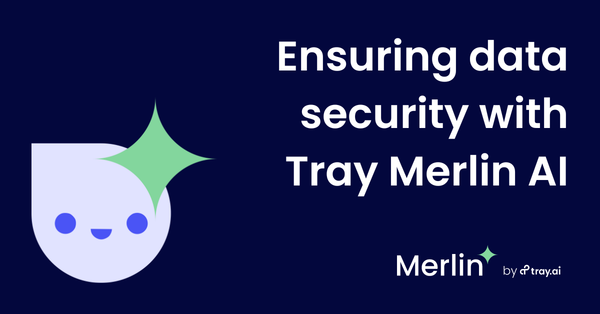How automation maturity gives you an edge
What is “automation maturity,” and why according to Gartner, does it confer important business advantages? Below, we’ll also discuss how truly world-class organizations connect the dots between integration and automation maturity to secure competitive advantage and turn their companies into automated organizations.
One of the most consistent questions our customers ask is: “How well are we delivering automation for our team and organization?” While more teams are implementing automation to close operational gaps and scale out their processes, they wonder if they are making “enough” progress to achieving their goals, or whether they’re moving fast enough?
It is very common to wonder about one’s progress with novel and emerging technologies, such as AI-ready iPaaS, which not only integrate an organization’s tech stack, but also give teams the power to automate an infuse AI into any business process. When working with technologies that fundamentally change the way organizations operate, it is definitely worth investigating the implications of progress, speed, and successfully attaining goals.
Gartner’s research isn’t the only source of insights on integration and automation maturity. As tech stacks expand, manual work increases as well. More importantly, poorly-integrated technology stacks have dire consequences for organizations of every size. Over 74% of businesses reported spending one to five hours each week manually moving data and 65% say that they spend a “significant amount of time on manual work.”
Tackling the toughest challenges with automation
At scale, the impact of the sheer amount of manual work occurring is staggering. As employees are forced to manually move data around, key organizational initiatives such as efficient growth and digital transformation are simply out of reach. If organizations can reduce manual work, they can develop a sustained competitive advantage simply by implementing automated processes that let their teams focus on strategic projects instead of hours of manual data work.
It’s clear that integration and automation are critical to organizational agility and success. Effectively delivering automation across the organization can be a strategic game-changer for every organization.
Interestingly, research also shows that a critical driver of automation success is related to an organization’s approach to automation more generally. Are automation projects happening on an ad hoc basis, or is an organization using a deliberate, mature program to identify automation opportunities?
It’s clear that automation maturity is a significant driver of automation success.
Automation maturity is a spectrum
When we first meet with customers, their needs and approach to automation vary widely. Some are replacing legacy integration platforms, while others are simply trying to reduce manual work. That’s where our world-class customer success team comes in.
As they begin to scope our customer requirements, one of our CS team’s key goals is to fully understand where the customer is on their automation journey so we can help them reach their desired stage of maturity.

In general, each customer’s automation journey goes something like this:
Stage 1: Tactical integrations
Stage 2: Process efficiency
Stage 3: Team automations
Stage 4: Automated enterprise
Let’s examine what each of these stages means and what it takes to move up and to the right.
In stage 1, customers are looking to solve a very specific pain point or tactical integration. Business teams are often tired of waiting for technical teams in IT or business technology to solve their integration problems and decide to find a solution they can manage themselves. Tactical issues usually impact a specific process such as notifying sales teams about a new, hot lead.
Once the customer completes their first project and reduces their manual workload, our customer success team shows our customers how automation can impact larger, mission-critical processes such as end-to-end lead management and renewals automation.
In stage 2, customers start to rethink larger processes such as end-to-end renewals automation. This stage of maturity focuses on re-examining a critical process and identifying areas to improve process efficiency.
By identifying gaps within multiple applications and learning about where manual work is taking place, business teams start to ideate around the core processes that drive critical business metrics, such as lead conversion rates. As teams implement automation to eliminate their gaps, our customers start to move the needle and improve business performance.
To continue this example, a revenue operations team might start by delivering wider process automations. Then, the customer can find ways to drive automation across disparate teams and departments such as sales, finance, growth marketing, and product.
In stage 3, our customers begin to identify gaps across teams to drive new initiatives such as quote-to-cash processes or marketing personalization at scale. Cross-team automations drive sustainable competitive advantage because different teams no longer have to rely on manual work to collaborate. Now, even different teams across the organization can improve cash flow metrics or boost customer engagement to reduce churn.
Generally speaking, stage 3 is also where more technical teams such as IT and business technology groups begin to own, deploy, and manage automation projects across the organization. Now, key security, scalability, and governance features become a critical driver of automation success.
As technical teams take ownership of training, deployment, and day-to-day management of their iPaaS, suddenly stage 4 is possible -the automated enterprise. Our most mature customers have a complete and well-established culture of automation, including fully self-service tooling and governance for automation initiatives.
For the automated enterprise, manual work is a relic of the past and digital transformation can finally be within reach. But, it’s only possible when you can deliver democratized automation and integration at scale.



